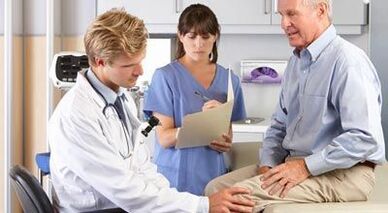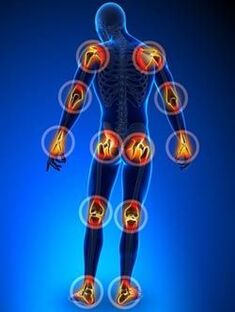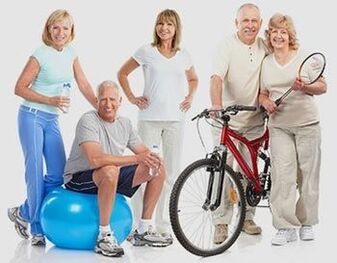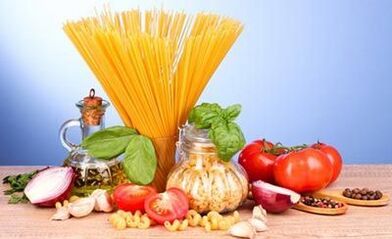Joint arthrosis is a complex dystrophic disease that is associated with the destruction of cartilage tissues inside the joints.This pathological process is the most common joint disease worldwide.Arthrosis is manifested by pain, morning stiffness and restriction of mobility.The gradual progression of the symptoms is characteristic, but the degree of development of the disease may be different.
The diagnosis is made on the basis of anamnesis, clinical examination and radiography results.The treatment of arthrosis is usually conservative: exercise therapy, anti -inflammatory drugs, face, blockade and more.
We will look more about what this disease is and how to treat it, we will look at the article.
What is arthrosis?

Arthrosis is a degenerative changes in the structure of the joints, which are accompanied by pain and visible deformity.The second name of the disease used in the international classification - osteoarthrosis.
The disease is characterized by slow progression, although it can be accelerated by some external factors.It all depends on the individual characteristics of the body, human disease and its method of vital activity.
According to statistics, arthrosis is ill by 6.5-12% of the globe population.Most people over 65 (62-85% of cases) suffer.There is a tendency to "rejuvenate" the pathology: in different countries, about 30-35% of patients are people aged 45-65, and 2-3% of the age of 20-45 years.
People who are a little familiar with medicine believe that arthritis and arthrosis are the same.In fact, this is not because in the first case the disease is an acute inflammatory, and in the second - a long, more pronounced chronic.

Types
The formulation of the diagnosis for arthrosis may be different, although the essence of the disease is the same.Most often, the questions and misunderstanding of patients are related to several terminal conditions of arthrosis:
- Arthrosoarthritis is a classic arthrosis in which an inflammatory process is pronounced;
- Osteoarthrosis is exactly the same as arthrosis;
- Deformation (osteoarthrosis) - SO - the latest stages of the disease, which are manifested by deformity and closure of the joint;
- Coxarthrosis - a shortened term indicating the lesion of the hip joint;
- Gonarthrosis is an abbreviated term, which means "knee arthrosis";
- Spondylartrosis is the lesion of arthrosis of the small joints of the arc of the spine.
There are many varieties of this disease.The classification may occur on the basis of the location of the affected areas and depending on the causes of the disease.
Types of arthrosis depending on location:
- Knee
- Hip joints
- Cervical
- Brachial
- Arms and fingers
- Spine
- Ankle
- Primal polio
Depending on the number of joints included, the following varieties are distinguished:
- Monoarthrosis.
- Oligoarthrosis - no more than 2 joints are affected.
- Polyarthrosis - participates from 3 joint groups.
The degree of damage to the joint
| Arthrosis | Symptoms |
| 1 degree | The first stage of arthrosis - there are no pronounced morphological changes, only the composition of the synovial fluid is disturbed.The fluid is delivered more for cartilage tissue with nutrients, the resistance of cartilage to conventional loads decreases.Due to the overload of the joint surfaces, inflammation occurs, pain occurs. |
| 2 degrees | The joint is destroyed.Osteophytes are formed.The pain during loads and movement becomes more severe, a characteristic crisis is heard in the affected areas. |
| 3 degrees | This is the most severe stage of development of this disease.There is a pathological change in the sites of the inflamed joints.Inflammation occurs.The patient experiences stiffness when moving, as the muscles cannot completely contract and perform their functions. |
Reasons
The formation of arthrosis is facilitated by two causes - the load and the lack of full nutrition, which supplies vitamins, minerals to repair tissues.Each person's joints carry a load.Athletes and dancers, with physical work, the load on their legs is greater, which means that the bone joints wear out more quickly and require high quality nutrition.With a calm lifestyle, the maintenance apparatus wears out more slowly, but also requires periodic tissue renewal.
Primary arthrosis
This type is most often associated with congenital inferiority and tendency of cartilage to damage and destruction as a result of metabolic disorders.The most common causes that cause this disease:
- hereditary and genetic;
- Menopause;
- Frequent and seemingly minor injuries (for example among athletes).
Secondary arthrosis
The secondary type most often deforms arthrosis and progresses against the background of a decrease in cartilage stability to the usual load.The development of this pathology is facilitated by:
- Injuries;
- obesity;
- weakness of relationships and muscles;
- Arthritis.
With age, predisposition to the disease increases.After 70 years, arthrosis is diagnosed with every second pensioner.As the maximum load falls on the legs (one moves - walking, standing, running, jumping), then the first signs are formed here.
Signs and symptoms of arthrosis
Arthrosis belongs to the category of chronic diseases.Sometimes the disease can unnoticeable for years, only occasionally recalling pain in the joint on the joint or uncomfortable movement.But it also happens that the disease develops rapidly to a severe stage in just a few months.
In any case, it is important to remember if you do not cure the disease, its symptoms will increase over time, worsening the quality of life and in severe cases - leading to damage and immobilization.
Symptoms with arthrosis of the joints:
- Pain.The painful sensations with arthrosis are pronounced, especially after different types of loads.When a person reaches a state of peace, after a while the uncomfortable sensations disappear.The localization of pain occurs directly at the point where changes have occurred in the usual structures of the body.In some cases, pain in arthrosis can occur when a person rests, being completely relaxed.They appear very sharply and strongly, which can be compared to dental pain.Most often it happens in the morning.
- The second sign of arthrosis is crispy, but you should not confuse this symptom with the usual click of the joints, which is found in almost every person and does not carry discomfort.The pew in the disease is characterized by gross and dry sound, it carries pain and severe discomfort.With the development of the disease, the symptom becomes more and more painful and painful.
- Reducing joint mobility.It is also considered one of the characteristic symptoms of arthrosis, but it already occurs at the stage of active progression of the disease.During the development of arthrosis, the growth/germination of bone neoplasms occurs, leading to spasms of muscle tissue, reducing the lumen in the joint bag - limiting the movement of this site is guaranteed.
- Deformation of the joint.Its modification is determined by the fact that osteophytes grow on the surface of the bones and synovial fluid arrives.Although deformity is one of the most symptoms when arthrosis has hit the joint largely.
- Промени в мускулния тонус.At first, especially with severe pain, the periarticular muscles are reflexively tense.В бъдеще, тъй като двигателната активност се губи, мускулите атрофират.
- Skin manifestations.Optional sign.In the initial stages, skin redness is possible when projection of the joint.In the future, with the progress of arthrosis and muscle atrophy, the skin becomes pale, becomes dry, pigmented.
| Joints that arthrosis affects more frequently: | Largely suffers: |
|
|
Complications
If arthrosis does not provide proper attention, after a while it is not treated properly, it can lead not only to the complete destruction of the patient's joint, but also to a change in the biomechanics of the spine, which makes it hernia in the intervertebral discs and the development of arthrosis in others, so far the still healthy joints begins.
The danger of untimely treatment of any type of arthrosis lies in the related complications, adverse effects:
- Inflamed joints are deformed and gradually destroyed;
- Movements become limited, joint mobility is partially or completely limited;
- The spine is impaired;
- Interdiscont hernia are formed;
- Neuralgia develops;
- The life of the patient with arthrosis is reduced;
- The face becomes disabled.
Diagnostics
First, they try to see structural changes in the affected areas to appreciate their weight and distribution.Metabolic disorders in the body should also be determined, which have become a favorable background for the onset of arthrosis.Therefore, a set of studies consists of the following events:
- Radiography.
- Magnetic resonance imaging.
- Ultrasound.
- Arthroscopy.
- Biochemical blood tests (hormonal spectrum, markers of inflammation, calcium metabolism, roar).
Considering the radiological characteristics, experts in the field of orthopedics and trauma distinguish the following stages of arthrosis (classification of Kelgren-Lurst):
- Stage 1 (doubtful arthrosis) - suspicion of narrowing the joint, osteophytes are absent or available in small quantities.
- Stage 2 (soft) - Suspicion for narrowing the gap of joints are clearly defined osteophytes.
- Stage 3 (moderate) - clear narrowing of the joint, there are clear osteophytes, bone deformities are possible.
- Stage 4 (severe arthrosis) - pronounced narrowing of the joint, large osteophytes, pronounced bone deformities and osteosclerosis.
Please note: the course of the disease in question is very slow and in the first stage it may not be characterized by any symptoms and inconsistent joint pain and increased fatigue can be inherent even to healthy people with high physical exertion.Therefore, the independent diagnosis of arthrosis is almost impossible.
How to treat arthrosis of the joints

Principles of Treatment of Arthrosis:
- Eliminate excessive joint loads;
- Therapy with anti -inflammatory and analgesic pills.Also, with complex therapy, chondroprotectors are actively used for arthrosis;
- Physiotherapy Physical Education;
- treatment with sanatorium;
- Magnetotherapy, electrotherapy, laser therapy, shock wave therapy;
- Intra -articular oxygenatherapy;
- intraosal blockade;
- It is important to choose the right nutrition for arthrosis.
Medication methods
How to treat arthrosis with medicines?This question is the most common among patients.Treatment is performed using three groups of medicines:
- Chondroprotectors.The drugs of this group restore hyaline cartilage as they contain the components that are part of it.They are recommended by all patients in the form of a long-term book (courses 3-4 months 2 times a year).Use tablets and capsules.
- Hormonal corticosteroids.This group of medicines is most effective during the period of exacerbation of arthrosis.Intramuscular injections are most commonly made.But such a category of drugs in pharmacies is also represented in the form of plasters, ointments - they are only used externally, you can expect a very quick and powerful effect.
- The use of non -steroidal anti -inflammatory drugs to reduce pain and eliminate the inflammatory process.
- Injections.Injectable drugs quickly stop pain, reduce the active symptoms.Intramuscular, intravenous or intraiorticular administration of the drug should only be performed by a medical professional.These agents are not able to save the patient from the cause of the disease, but effectively reduce its negative manifestations.
Other medicines for the treatment of arthrosis are used medicines:
- Improvement of blood in the joints;
- Improving the supply of the tissues of oxygen joints - vitamins "B";
- acting on cartilage metabolism;
- desensitizing agents that reduce body reactivity;
- Synthetic hormones of the adrenal glands.
Surgical treatment
Surgical methods suggest two ways to solve the problem:
- Arthroscopy is an surgery performed on an inflamed joint.By drilling, a special needle is introduced, which removes damaged areas and polishes the affected area.
- Prosthetics are a complex surgery that consists of removing damaged joints and incorporating a new one.Modern orthopedics stepped far ahead, starting new, improved dentures that are extremely rejected by the body and wearing them does not cause discomfort.
Exercise therapy for arthrosis
Medical physical education is used for arthrosis in the subacute stage.The main tasks of exercise:
- orthopedic correction (elimination of defects in the affected limbs);
- Reduction of static joint load;
- Improvement of joint mobility or prevent it from deterioration.
Digital gymnastics and a set of exercises for unraveling muscles and joints are performed.Exercises for the affected joints are performed in a supine position, side or back, sitting.They alternate with breathing exercises that help to relax the muscles.The patient performs movements in the affected joint independently or with the help of an instructor.
Pain should not be allowed during the hours.The exercises are performed at a slow pace and only after eliminating acute symptoms.Sudden and high amplitude movements should be avoided, which can cause unpleasant sensations.
Physical upbringing should be engaged in the supervision of a doctor and once you have acquired the necessary skills, you can start home exercise.
Physiotherapy and manual therapy
The use of these treatments gives very good results in the initial stages of arthrosis.
- Manual treatment should only be performed by an experienced doctor who has proven to be the treatment of joint pathologies.For example, in the treatment of knee arthrosis, manual therapy together with limb extraction, intraiortic injections and intake of chondroprotectors can quickly place the patient on the feet.
- Physiotherapy is used as an auxiliary treatment to accelerate the rehabilitation period.Their main purpose is to reduce inflammation and to accelerate tissue regeneration.Such procedures as: laser and cryotherapy, thermal treatment- ozoquet, mud baths, paraffin therapy and UOF are widely used.
Food and diet

The arthrosis diet is aimed at correcting metabolic processes, body weight, preventing irreversible changes in hyaline cartilage of the joints, reducing the inflammatory process and strengthening the structures of the connective tissue.There is no special diet with arthrosis of the joints.The following principles are based on therapeutic nutrition:
- Food should be physiologically complete and balanced with a high content of vitamins and minerals.The energy value of the diet for patients with normal weight should correspond to the average value of daily energy consumption and not exceed it.
- The use of salt is limited to 5-8 g/day, as well as salty products (salted, canned food, chips, salted fish).
- The use of free fluid should be increased to 2-2.5 l/day.
- It is necessary to exclude the processing of products using frying.The food should be baked, cooking, cooking or stewing.
- You need to switch to a frequent, partial meal.
- Food should be taken in small portions that will exclude weight gain and weight gain.
With arthrosis, the use of a solid extreme diet is prohibited.Because in this type of diet the body ejects a large amount of fluid, which in turn washes calcium and potassium from the bones and joints.
Useful products:
- Fish and seafood, nuts, linen, as a source of omega - 3.
- Low fat and jelly meat.
- Products rich in Vitamin E, D, C, A and Groups B. These are fresh fruits, vegetables and berries.It is especially useful to use: beets, tomatoes, carrots, cabbage, blueberries, legumes, bananas, oranges, apples and whole grain bread.
- Ginger and other spices.
- Milk and dairy products are an excellent source of calcium.
- Useful freshly squeezed juices.
Prohibited Products:
- Fast food, sausage products, midfield products, chips and all refined products.
- Fatty meat.
- SDOBA, white bread, sugar.
- Thick dairy products, salted cheeses.
- Mayonnaise, transgenic fat.
- White rice is strengthened.
- Marinas, conservation, salting.
- Alcohol, energy, soda.
Folk methods of treatment
Before using any folk remedies for arthrosis, be sure to consult your doctor.
- Intervene the nettles and countertops on the juniper in a homogeneous mass.Contact 1: 3 oil. To relieve pain, rub the inflamed joints up to 3 times a day.
- The roots, flowers or branches of black from elderberry.Pour 1 tbsp.A spoonful of raw materials with 1 cup boiling water.Insist, packing, 3 hours, then strain.Drink 1/4 cup up to 4 times a day 30 minutes before meals.
- Boil 10 g of bay leaf in 250 ml of water for five minutes.Leave for five hours.Drink from time to time in small sips throughout the day.We treat for three days, rest for five, then we treat for three days.
- The mustard compresses with honey.Mix mustard powder with honey and add one egg.Place the resulting ointment on the gauze and apply to the sore spot.
- A complex compress.Cut the slightly sliced cabbage into pieces and pass through the juicer.Moisten the natural woolen tissue in the juice and attach to the sore spot.
- The series is another excellent treatment for arthrosis.Cook in 250 ml of boiling water 2 large tablespoons of series.After 20 minutes, the decoction is ready.Take 2 tablespoons three times a day before meals.The course is 30 days.
- I iron the chamomile, calendula and birco deals well with pain, relieves inflammation.For its preparation, you should mix with equal amounts of chamomile flowers, calendula, bircot root, associate herbs with oil jelly and leave for 1-2 days.Use an ointment for severe pain up to 5 times a day.
- In boiling water, place the equal parts of the willow bark, birch and the flowers of the calendula.Boil the mixture for 10 minutes, then let it cook under the lid the same amount.You should take a decoction, cooled 200 ml half an hour before meals.
Prevention
In reducing the risk of arthrosis, next moments play an important role:
- get rid of extra pounds;
- treatment of musculoskeletal pathologies;
- active lifelong movement;
- Proper nutrition (diet, balanced diet);
- Avoiding joint hypothermia;
- A healthy lifestyle with the right regime.































